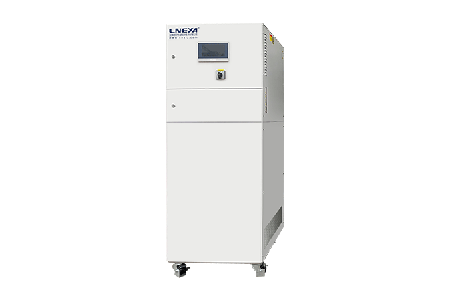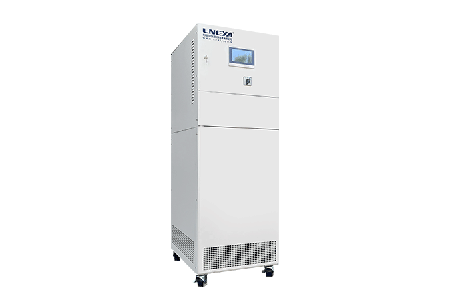Which Is A Better Choice: Glycol Chiller VS Water Chiller?
Different industrial sectors have varying cooling requirements. This blog post explores the key differences between glycol chillers and water chillers. By examining five critical factors, we provide a clear framework to help you determine which type of chiller is best suited to your specific application.
Understanding the Basics: What Are Glycol and Water Chillers?
What Is A Glycol Chiller?
A glycol chiller is a specialized cooling system designed to deliver low-temperature performance. It is widely used in applications requiring precise temperature control. By using an ethylene glycol solution as the coolant, this type of chiller enables efficient heat exchange at lower temperatures. This makes it ideal for industrial production, laboratory research, and other environments with specific cooling requirements.
Glycol chillers offer superior low-temperature adaptability. They are capable of stable operation under more demanding conditions—providing you with a reliable and effective cooling solution.
What Is A Water Chiller?
A water chiller utilizes a refrigeration system designed to extract heat from water through a refrigeration cycle or an absorption process. The cooled water is subsequently circulated to different equipment or systems to sustain the desired temperature.
Key Differences Between Glycol And Water Chiller
Coolant
A glycol chiller uses antifreeze—specifically, a water-based ethylene glycol solution—as its coolant. This solution is known for its low-temperature fluidity and excellent antifreeze properties. It effectively prevents internal piping within the chiller from freezing in low-temperature environments, helping to protect the system and ensure stable operation.
For water chillers, the coolant typically consists of treated water such as DI (deionized) water or purified water. These treated water types help reduce the risk of corrosion and clogging in the chiller’s piping system, thereby extending the equipment’s operational lifespan.
Freezing Point
As ambient temperatures begin to drop—especially when approaching or falling below freezing—water can easily freeze. This can cause water flow to stop and may severely impact the piping system, leading to blockages or even pipe ruptures due to the expansion of ice.
To avoid such problems, ethylene glycol or a blend of ethylene glycol and water is typically used as an antifreeze solution. Ethylene glycol has a significantly lower freezing point than water, making it far less likely to freeze even in cold weather conditions. This effectively reduces the risk of frozen or blocked pipes, helping to ensure the system operates smoothly and reliably.
Cost
In the industrial refrigeration sector, the operating costs of glycol chillers are generally higher than those of water chillers. The main reason for this difference lies in the cooling medium: glycol chillers use an ethylene glycol–water solution, and ethylene glycol itself is significantly more expensive than regular water. Additionally, the process of adding, maintaining, and periodically replacing the glycol solution further contributes to the system’s overall operational costs.
In contrast, using water alone as a coolant typically involves lower initial investment and maintenance expenses. For example, in water-cooled systems, tap water often only requires basic pretreatment—such as deionization to remove impurities or minerals—to prevent issues like scaling or corrosion in the piping system.
Efficiency
Glycol chillers can provide lower temperature output for the equipment they cool. However, when it comes to heat transfer efficiency, water chillers typically perform better. This is because water has a higher thermal conductivity and specific heat capacity compared to ethylene glycol solutions. While ethylene glycol offers advantages such as antifreeze protection, it falls slightly short in terms of heat transfer performance.
If your application requires a wide temperature range and may involve low-temperature environments, a glycol chiller is likely the more suitable option. On the other hand, if your priority is maximum heat transfer efficiency and antifreeze protection is not a concern, a water chiller may be the better choice.
Applications: Where Each Chiller Excels?
Glycol chillers are ideal for maintaining temperature in low-temperature environments.
For example, in the testing of components for new energy vehicles, LNEYA automotive chillers can be used to perform durability tests on electric vehicle battery packs. With a temperature control range from -40°C to +100°C, it provides the precise thermal conditions required for such applications.
In contrast, a water chiller would not be capable of delivering the low-temperature environment needed for battery pack testing.

Conclusion: Which Chiller Is Best For Your Needs?
By taking all five of the above factors into account, you can determine with confidence whether a glycol chiller or a water chiller is the better fit for your industrial application.
Over the past 15 years, LNEYA has focused heavily on the innovation and development of high-performance chillers in the low-temperature control field. With a complete and versatile product line, LNEYA is fully equipped to support your cooling needs and deliver reliable, efficient solutions for your operations.
Add our account manager via the QR code below
Recommended chillers

LTZ +5℃-90℃
glycol chillers
Cooling capacity 4kW~20kW
Heating power 3.5kW~15kW
temperature accuracy ±0.3℃

LTZ -40℃~90℃
fluid chillers
Cooling capacity 0.7kW~11.5kW
Heating power 2.5kW~10kW
temperature accuracy ±0.3℃

LTZ +5℃~30℃
laboratory chillers
Cooling capacity 23kW~155kW
Circulation Pump MAX 5m³/h~28m³/h 2bar
temperature accuracy ±0.5℃

LTZ -25℃~30℃
sub zero chillers
Cooling capacity 7kW~64.5kW
Circulation Pump MAX 2.5m³/h~15m³/h 2bar
temperature accuracy ±0.5℃
 LNEYA Industrial Chillers Manufacturer Supplier
LNEYA Industrial Chillers Manufacturer Supplier













